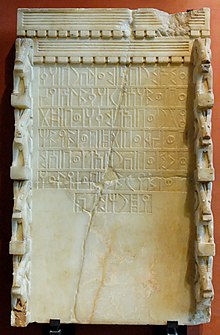User:Ahmedaliyemen/sandbox/Selected article/2

The ancient history of Yemen or South Arabia is especially important because it is one of the oldest centers of civilization in the Near East. Its relatively fertile land and adequate rainfall in a moister climate helped sustain a stable population, a feature recognized by the ancient Greek geographer Ptolemy, who described Yemen as Eudaimon Arabia (better known in its Latin translation, Arabia Felix) meaning Fortunate Arabia or Happy Arabia. Between the eighth century BCE and the sixth century CE, it was dominated by six main states which rivaled each other, or were allied with each other and controlled the lucrative spice trade: Saba', Ma'īn, Qatabān, Hadhramaut, Kingdom of Awsan, and the Himyarite Kingdom. Islam arrived in 630 CE and Yemen became part of the Muslim realm.
The centers of the Old South Arabian kingdoms of present-day Yemen lay around the desert area called Ramlat al-Sab'atayn, known to medieval Arab geographers as Ṣayhad. The southern and western Highlands and the coastal region were less influential politically. The coastal cities were however already very important from the beginning for trade. Apart from the territory of modern Yemen, the kingdoms extended into Oman, as far as the north Arabian oasis of Lihyan (also called Dedan), to Eritrea, and even along coastal East Africa to what is now Tanzania. (Full article...)
